EVIDENCE
Witnesses speak —
the reason why PENTAX was loved by so many.
How the brand was interpreted and what it was that grabbed the hearts of fans. We interviewed two experts who are very familiar with the history of PENTAX.
PENTAX, loved by many as the first company in Japan to release a 35 mm SLR camera. For as many fans, there are just as many memories and episodes. This time, we were able to have an interview with photographer, Mr. Tetsu Iida, and Mr. Kazuo Ikenaga from RICOH Imaging Square in Ginza who spoke to us about their memories with PENTAX. These two spoke on interesting episodes that only they, as long-time users of PENTAX products, could cheerfully chat about.
Photographer TETSU IIDA
RICOH Imaging Square in Ginza KAZUO IKENAGA
PENTAX products that both have a great fondness of.
- Iida
- For you, Mr. Ikenaga, which PENTAX product would you say you are most fond of?
- Ikenaga
- The first product that comes to my mind is the "Asahiflex I." This was released in the year I was born (laughs).
- Iida
- I can only expect something like that from you, Mr Ikenaga (laughs). As for me, I would say the "ASAHI PENTAX SV". This was the first SLR camera that I ever owned.
- Ikenaga
- The "V" in SV came from "Vorlaufwerk" which is the German word for self timer. As PENTAX's first model equipped with a self timer, this model was released in 1962 upon adding improvements to the S3. Paul McCartney was a user of this model.
- Iida
- Yes, I recall. If I remember correctly, the standard lens was a Takumar 55 mm F1.8 lens. There was also a replacement lens, the 28 mm F3.5, which had a larger front lens. I have memories of unreasonably asking my brother to give me his camera that he was using until he gave in. Once I had a job, it was the "K Mount Series." When the series was first released, I was offered the work of shooting the sample photos. Some others are the "PENTAX ME Super," the "PENTAX 645," and the "PENTAX 6×7." Together with their lenses, each of these were my favorites that I used for work.
- Ikenaga
- The "Baké-PEN (the nickname of the "PENTAX 6×7")." That is a nostalgic model. This nickname was not in use when the model first came out. Sometime after, apparently this nickname was coined for its monstrous size compared to a 35 mm SLR camera. (Translator's note: "Baké" is a phrase from "Bakémono" which is the Japanese word for monster.)
- Iida
- Even among the students I teach at photography school, there are still some students who shoot their work with the Baké-PEN. Watching them struggle with color negative film and with one standard lens is deeply emotive.
- Ikenaga
- To tell you a story, I too have purchased this model back when I was a college student with a part-time job at a photo laboratory. I guess that would be around 1972.
- Iida
- That's shortly after its release so it must have been an expensive camera. I'm surprised you saved enough money from a part-time job!
- Ikenaga
- That's how badly I wanted it (laughs). When I would be out shooting photos with it, strangers would come up to me asking, "That's the 6×7 right? Can I hold it?" When I went to the store through which I ordered the camera, the staff had already taken it out of the box and was all excited. I felt like, "Hey! Don't open it before I'm even there!" (laughs)
- Iida
- At the time, there were very few people who owned this model. That's how rare that camera was.
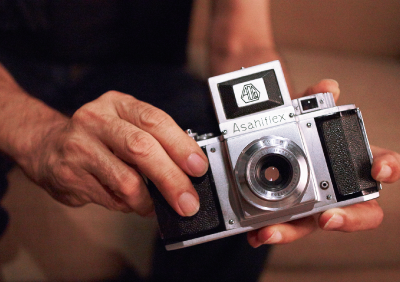
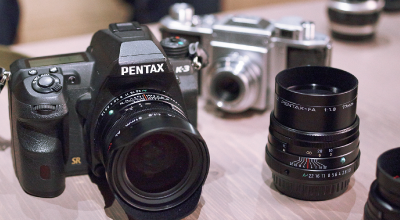
Especially impressive events in the history of PENTAX
- Ikenaga
- I can clearly recall 1975 when the "K Series" was released. The "Bayonet (K mount)," employed with the "ASAHI PENTAX K2," "KX," and "KM" which were three models released at the same time, had a great impact on fans who were in love with the conventional screw mount products. That was when the mount format was revamped all at once. I have memories of that time when I was still in my second year with the company and I had to apologize to customers who was scolding me about the change.
- Iida
- Changing the standard for the camera mount really is a big issue.
- Ikenaga
- The fact that many fans voiced their opinions was something to be grateful of though. It shows how much they were interested in our products.
- Iida
- There was even a quick release of the "Mount Adaptor K" that made K mount lenses compatible with the "M42 mount" which was the screw-on system that was common during that time. That showed how they properly made considerations for users of older models. I have heard that even when the "ASAHI PENTAX (AP)" was introduced, an adaptor ring for lens compatibility was prepared since the specifications for the screw mount differed from that of the "Asahiflex." Perhaps this kindness of not neglecting care for old-time users has kept hold of the hearts of fans.
- Ikenaga
- In the aspect of compatibility and consistency, we have made extreme amounts of consideration. This is part of why, although behind others in the industry, as a result we have been able to keep the standard of the "K mount" unchanged up to this day.
- Iida
- It is surprising that, inclusive of up to the "K mount" used with current digital SLR cameras, it has been almost 40 years since the standard first appeared.
- Ikenaga
- Perhaps a lot of our products have a comparatively longer life of 10 to 20 years. While the same can be said for the "PENTAX 6×7" mentioned earlier, how we continued to make products without converting our style was evaluated which even led to being awarded the "Long-Life Design Award" from the Ministry of International Trade and Industry at the time.
- Iida
- It seems that even with a quick product cycle, there is a great sense of uniformity while continuously evolving without changing. Perhaps this stance is an attractiveness of PENTAX products.
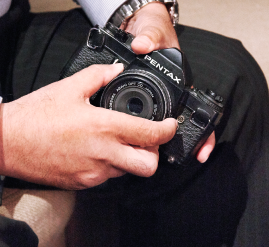
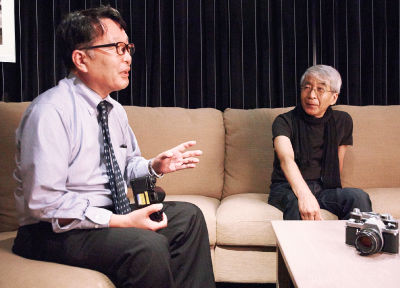
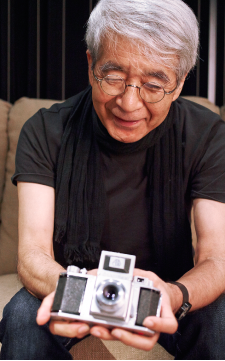
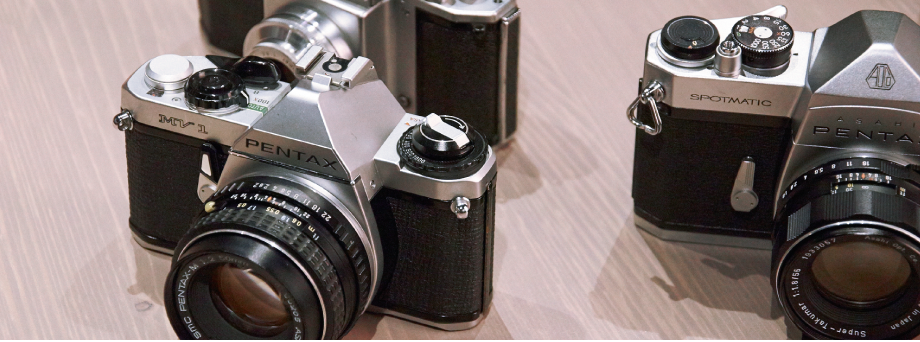
Attractiveness unique to PENTAX and future expectations
- Ikenaga
- PENTAX has conducted product development where, without changing the good parts of products, areas in which change is deemed necessary are boldly revamped. The bold decision of switching to the use of the "K mount" with an eye to the future indeed represents this style. In the camera industry where it was once believed that auto exposure and open aperture metering would not be possible with a screw mount, the "ASAHI PENTAX SPF" and the "ASAHI PENTAX ES" realized these things. In that sense, I guess it can be said that PENTAX was a manufacturer having a high level of technological capabilities.
- Iida
- In the same period, there was also an important event in the world of lenses.
- Ikenaga
- That would be the introduction of the multi-layer coated "SMC Lenses." I believe that this technology significantly boosted the evolution of expressions in photography.
- Iida
- At a time when zoom lenses having a greater number of lens elements were starting to gain attention, increasing transmittance by coating the lens was epoch-making and blew me away. This revolutionary technology even led to a trend among camera fans where it was said that "if you’re looking for a camera, you better make it a PENTAX!"
- Ikenaga
- Even in regard to controllability and reproduction of colors with film, the level of freedom increased. It was in this era where the level of optical technology in Japan was raised one step further. In particular with the multi-layer coating of the "SMC Lenses," this was an application of the coating that was used on the windows of the Apollo spacecraft. Using technology that involves a cost similar to that of space development and applying such to lenses was off-the-wall, even from the whole industry. Metaphorically speaking of the cost in relation to the effects, related persons referred to this as "shooting a sparrow with a cannon."
- Iida
- That is exactly a case of a so-called more-than-enough function.
- Ikenaga
- Even after this, there has been this insatiable stance of incorporating new technologies as soon as they are made available. This stance can be seen with such as the installation of super computers and 3D printers at locations of development. This yearning is attractive and will perhaps thrive the development of technologies that are yet to be seen.
- Iida
- In regard to the camera body, there is the strong impression that PENTAX has been enjoying success in realizing Japan-firsts and world-firsts. Again it must be because of this greed for curiosity that PENTAX has been able to maintain a high level of product quality. The same goes with lenses. After all, the lenses from the era of film cameras can still be used in today where digital cameras are in their prime. When the switch was first made from film to digital, there were a lot of worries such as those concerning compatibility with sensors. Such worries are useless with the digital cameras of today. I'm glad I'm living long enough to enjoy this (laughs). However, it is for this reason that I believe past lenses need to be re-evaluated. Although super resolution realized with full-frame sensors is becoming a standard in recent years, I am in anticipation of discoveries related to compatibility with old lenses. In regard to the depth of field, compared to an APS-C size sensor, because the depth of field becomes shallower with the same focal length, how the space is captured and how the subject stands out greatly differ. In this sense as well, I am looking forward to the full-frame model by PENTAX. I can't wait to see the day that a new power of depiction is born.
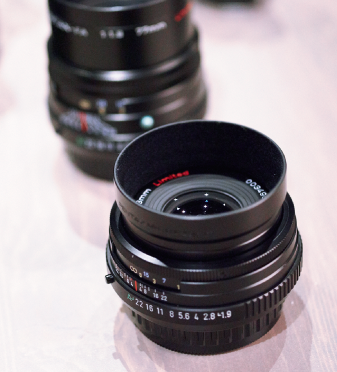
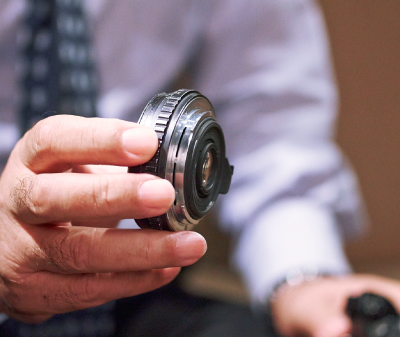
PROFILE
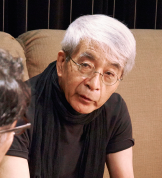
-
- Tetsu Iida
- Born in 1948. Originally from the Adachi ward in the Tokyo Metropolitan area. Since the 70's, Mr. Iida has been active as a photographer capturing urban environments such as bath houses and tasteful back alleys. Recipient of the Rookie Award at the Photographic Society of Japan Awards in 1987.
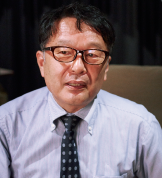
-
- Kazuo Ikenaga
- Born in 1952. Originally from the city of Oita in Oita Prefecture. Joined Asahi Pentax Corporation in 1974. Currently works for RICOH IMAGING COMPANY, LTD. at the RICOH Imaging Square in Ginza.